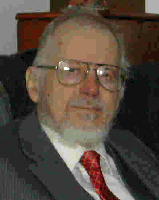 W9DMK
W9DMK 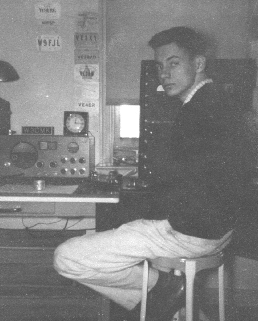
This web site is dedicated to providing free
software specific to transmission lines and their characteristic behavior. All
software at this web site was written by Robert Lay, licensed as W9DMK in March
1948. In addition to the free software you will find interesting articles, such
as "Transmission Lines for Dummies", "The
Quarter Wave Transformer", and "Observations on the Maximum Power Transfer Theorem".
Some
of the software listed below is written in Visual Basic for DOS and will run on
any DOS or Windows machine except NT based systems (i.e., Windows NT, Windows
2000, or Windows XP). Some programs are written in "C" for DOS and
will run on any DOS or Windows machine. Some programs are written in Visual Basic
for Windows or in Visual C++ for Windows and will run on all 32 bit Windows
systems.
Click on any thumbnail to see the full size screen shot!
Click on any program name to download its zip file!
 COAX_Z - A DOS program written in "C" that takes
you through the measurement of the characteristic impedance (Zo) of a piece of
coax. Based on the equations in the ARRL Antenna Book, this program produces
the Ro, Xo, Velocity Factor and other useful data about the line. Runs on any
DOS or Windows system.
COAX_Z - A DOS program written in "C" that takes
you through the measurement of the characteristic impedance (Zo) of a piece of
coax. Based on the equations in the ARRL Antenna Book, this program produces
the Ro, Xo, Velocity Factor and other useful data about the line. Runs on any
DOS or Windows system.
 LSECT - A program that designs "L" matching
sections to transform an antenna impedance to a specified value, such as 50
ohms. Written in Visual Basic for DOS. Requires the VB for DOS runtime module -
see below.
LSECT - A program that designs "L" matching
sections to transform an antenna impedance to a specified value, such as 50
ohms. Written in Visual Basic for DOS. Requires the VB for DOS runtime module -
see below.
LSECTW
– The Windows version of LSECT program above. Design “L” matching sections.
Written in VB 6.0, the zip file is about 1.8 MB and includes an extensive Help file
and the full Windows installation package for all versions of Windows..

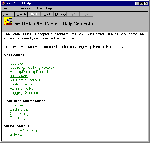 NCS - A net control program - very useful for
maintaining a simple data base for use in calling the roll and keeping track of
attendance and traffic. Includes a Help file and incorporates a Windows
installation program. Can be easily configured to display your own net's name
and logo.
NCS - A net control program - very useful for
maintaining a simple data base for use in calling the roll and keeping track of
attendance and traffic. Includes a Help file and incorporates a Windows
installation program. Can be easily configured to display your own net's name
and logo.
 NEWWAV - Similar in functionality to SWAVE but in a more
compact program for DOS. Accepts non-zero reactance component in the line
impedance and allows negative line lengths. It also writes the results to a
disk file for future reference or printing out.
NEWWAV - Similar in functionality to SWAVE but in a more
compact program for DOS. Accepts non-zero reactance component in the line
impedance and allows negative line lengths. It also writes the results to a
disk file for future reference or printing out.
![]() QT - A text insertion program that allows you to save
often-used text phrases and insert them into your typing stream with hot-keys.
Includes Help file and incorporates a Windows installation program.
QT - A text insertion program that allows you to save
often-used text phrases and insert them into your typing stream with hot-keys.
Includes Help file and incorporates a Windows installation program.
 RFBR- A program that computes impedances from
measurements made with a General Radio Model 1606 or similar RF Bridge. Dial
readings and frequency are input and the impedance is calculated. The special
feature of this program is that it performs the necessary calculations to
convert from a three-measurement sequence to compute the impedance of a
balanced load being measured by an unbalanced bridge. Requires the VB for DOS
runtime module - see below.
RFBR- A program that computes impedances from
measurements made with a General Radio Model 1606 or similar RF Bridge. Dial
readings and frequency are input and the impedance is calculated. The special
feature of this program is that it performs the necessary calculations to
convert from a three-measurement sequence to compute the impedance of a
balanced load being measured by an unbalanced bridge. Requires the VB for DOS
runtime module - see below.
RFBRWIN
- Same as RFBR, above, except written in Visual C++ for Windows. Works in
NT-based systems, such as Windows NT, Windows 2000 and Windows XP.
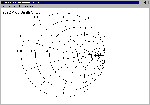
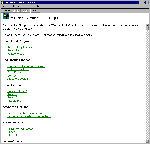 SMCHR - The Smith Chart program with its extensive Help
files. Written in Visual C++ ver 1.5, it runs in Windows 3.1 and later.
SMCHR - The Smith Chart program with its extensive Help
files. Written in Visual C++ ver 1.5, it runs in Windows 3.1 and later.
SMARTSMITH
– Version 1.6.2 (12/06/04) written in Visual Basic 6.0 – this program is a
smarter version of the Smith Chart program. It allows you to dynamically
generate impedance point plots as you configure each design element of an
impedance matching network. Much easier to use than SMCHR and also has an
extensive Help file with a Wizard that tells you what steps to take in
designing a matching network for a given load impedance. Complete Windows
installation kit – about 2 MB zip file. Version 1.6.2 adds several features
including better logging.
NETWORKPROCESSOR
– The plotting package for SmartSmith - about 66 Kb. Unzip this file into your SmartSmith
application folder, and it adds the capability to display plots of voltage,
current and impedance versus frequency for your SmartSmith matching network.
Includes extensive help files.
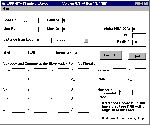 SWAVE - A Windows program for transmission lines - written
in Visual Basic 3.0 for Windows. Includes the reactive component of
characteristic impedance and allows negative values of line length. Requires
the VBRUN300.DLL run time module - see below.
SWAVE - A Windows program for transmission lines - written
in Visual Basic 3.0 for Windows. Includes the reactive component of
characteristic impedance and allows negative values of line length. Requires
the VBRUN300.DLL run time module - see below.
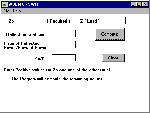 SWR - Computes the Standing Wave Ratio, given the power
readings on a line.
SWR - Computes the Standing Wave Ratio, given the power
readings on a line.
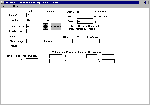 TLE - Transmission Line equations for Windows. Written
in Visual C++. This program provides the most comprehensive analysis of a
transmission line available from this site. In this release, the possibility of
non-zero reactance for Zo is introduced. If you are interested in the best of
the programs available on this topic from this site - this is it.
TLE - Transmission Line equations for Windows. Written
in Visual C++. This program provides the most comprehensive analysis of a
transmission line available from this site. In this release, the possibility of
non-zero reactance for Zo is introduced. If you are interested in the best of
the programs available on this topic from this site - this is it.
 VECTORS - A program that does complex arithmetic. If you are
challenged by vector arithmetic and want to avoid the cumbersome procedure for
adding, subtracting, multiplying or dividing vectors or complex numbers, then
you will like this program. Requires the VB for DOS runtime module - see below.
VECTORS - A program that does complex arithmetic. If you are
challenged by vector arithmetic and want to avoid the cumbersome procedure for
adding, subtracting, multiplying or dividing vectors or complex numbers, then
you will like this program. Requires the VB for DOS runtime module - see below.
VECTORSW
– The Windows version of the Vectors program, above. It’s a complex arithmetic
calculator. Solve difficult circuits in minutes with Vectors or Phasors.
Written in VB 6.0, the zip file is about 1.8 MB and includes an extensive Help
file and the full Windows installation package for all versions of Windows..
 XMSL - Transmission Line program that computes the points
of maximum current in the standing wave pattern. Written in Visual C++.
XMSL - Transmission Line program that computes the points
of maximum current in the standing wave pattern. Written in Visual C++.
XLINE
- This Windows program is another implementation of the Transmission Line
Equations for the Windows environment, similar to TLE or SWAVE programs, above.
Written in Visual Basic 6.0, this program is unique in that it features a spin
control for purposes of rapidly changing the length of line. In addition to the
VB runtime module, vbrun300.dll, this program also requires the additional
module, mscomct2.ocx, which can be downloaded as a zip file, here.
Run Time Module for VB
for DOS - .Visual Basic for DOS
programs require the run-time module VBDRT10E.EXE. Zipped copy of this file is available by clicking
on the link. After downloading and unzipping the file, save it in C:\
Windows\System or C:\Windows\System32..
The Maximum Power
Transfer Theorem (MPTT) -
Historically, the MPTT has been misunderstood - first from the standpoint of
understanding all of its implications, and second from the standpoint of its
effect on the maximum possible efficiency of a system. Consider the possibility
of every system having to have its internal impedance equal to its load
impedance. Would such systems be limited to 50% efficiency? What are the
implications of the theorem as it applies to maximum power transfer? Does it
mean that the system must be power limited? What are the implications of having
the load impedance vary? Does that mean we cannot analyze the system by varying
its internal impedance instead? These issues have been analyzed in an article
that I hope will shed some light on practical issues such as "conjugate
matching" and the efficiency of RF power amplifiers. This is a
rather large download in PDF format. You may want to use the right click pop up menu and
select "Save target as…"
Goldman Steady-State Equations and Goldman Transient Equations - In 1949, Stanford Goldman, Professor of Electrical
Engineering at Syracuse University, wrote his book, “Transformation Calculus
and Electrical Transients”, which was published by Prentice-Hall, Incorporated
as part of their Electrical Engineering Series, edited by W. L. Everitt. I have
written two articles, one addressing the problem in the transient phase and the
other addressing the problem in the steady-state. I found that Goldman’s work
on transmission lines is the only published work that covers both aspects of
the problem and provides a unified mathematical basis for each. The objective
of these two articles is to try to bring the mathematical concepts outlined by
Goldman to bear on specific, well known examples of the quarter wave matching
transformer. The reader will find that no matter whether the transient or the
steady-state model is pursued, the Goldman equations will provide a clearer
picture of what really goes on in the transmission line. Each article begins
with an explanation of the mathematical basis, which is then followed by a
numerical example for a specific quarter wave matching transformer.
![]()
Transmission Lines for Dummies | The Quarter Wave Transformer | Maximum Power Transfer Theorem